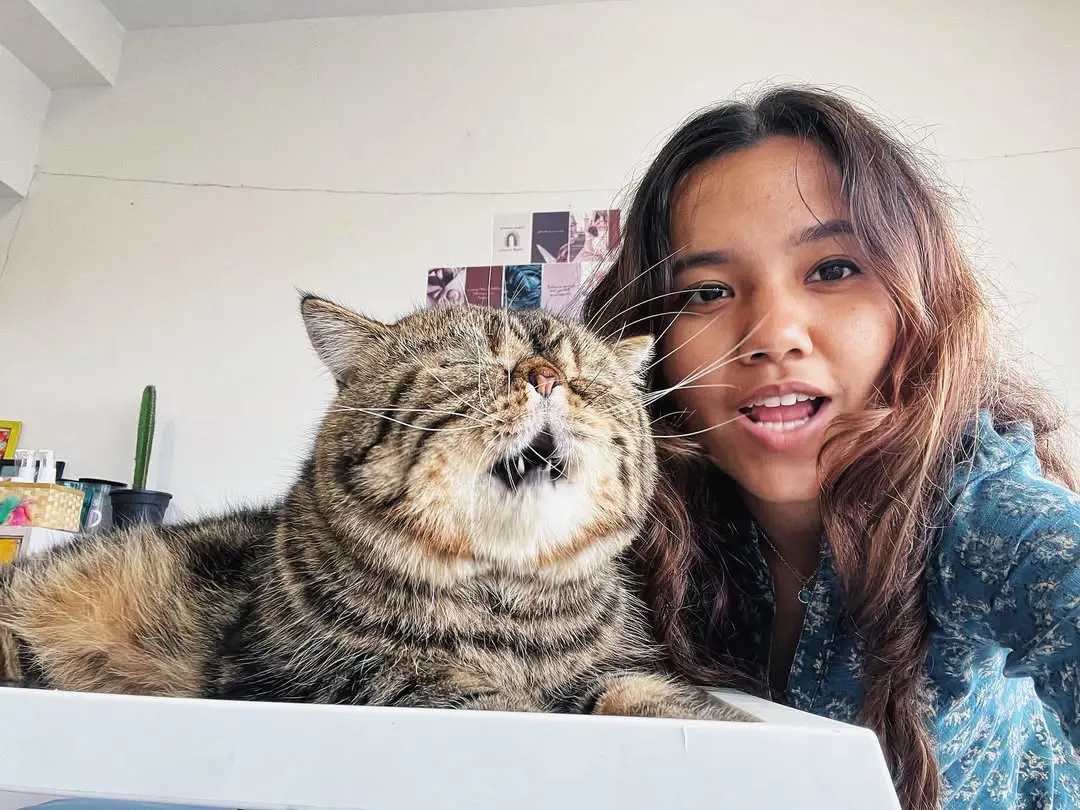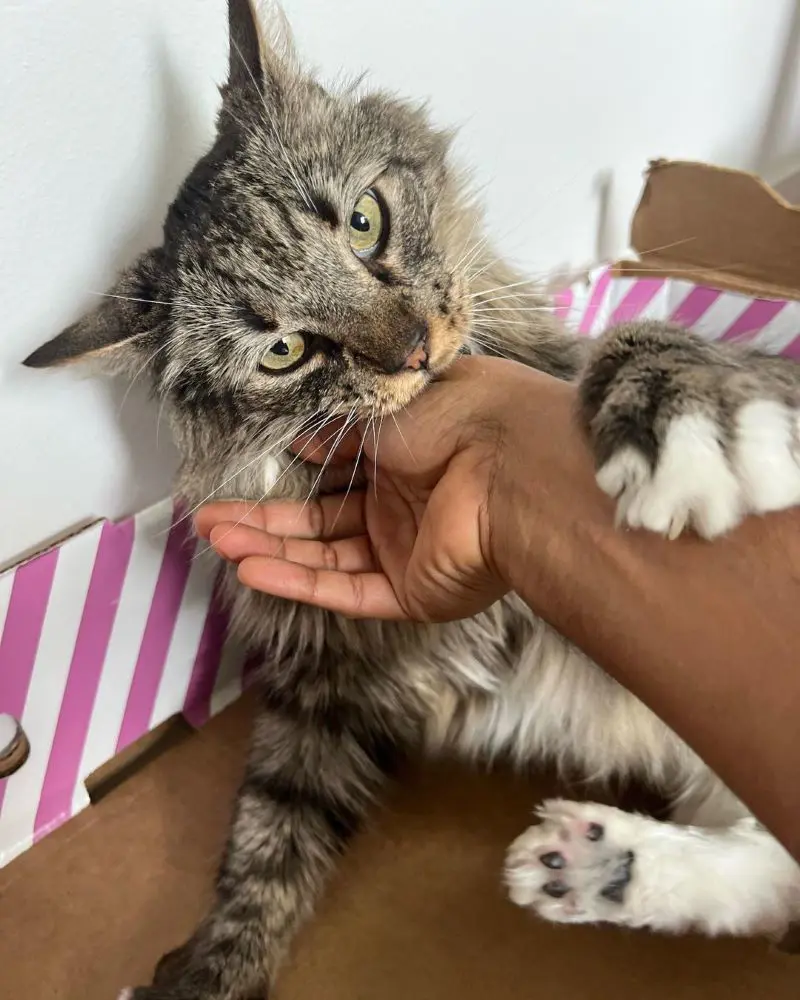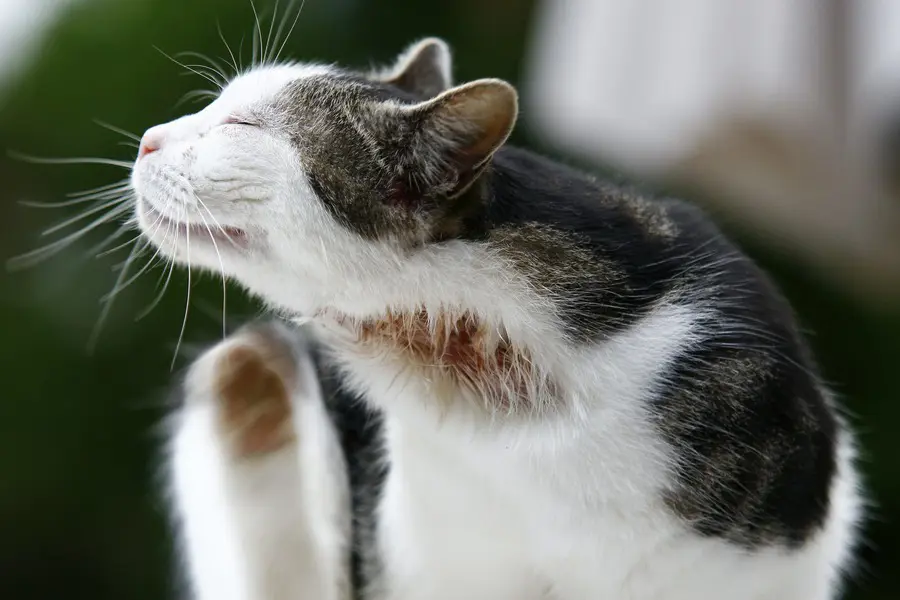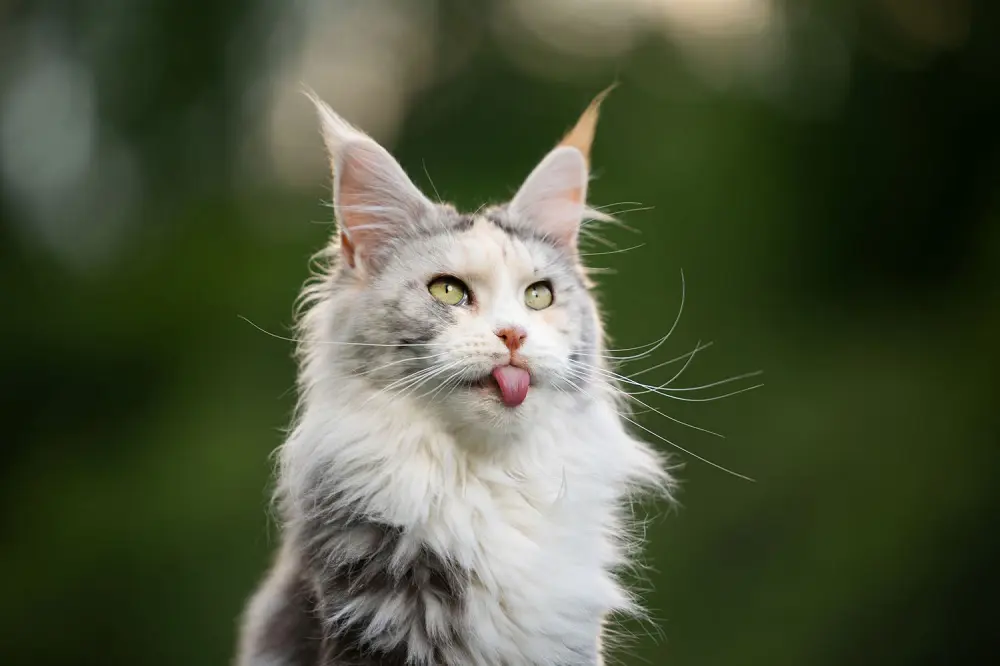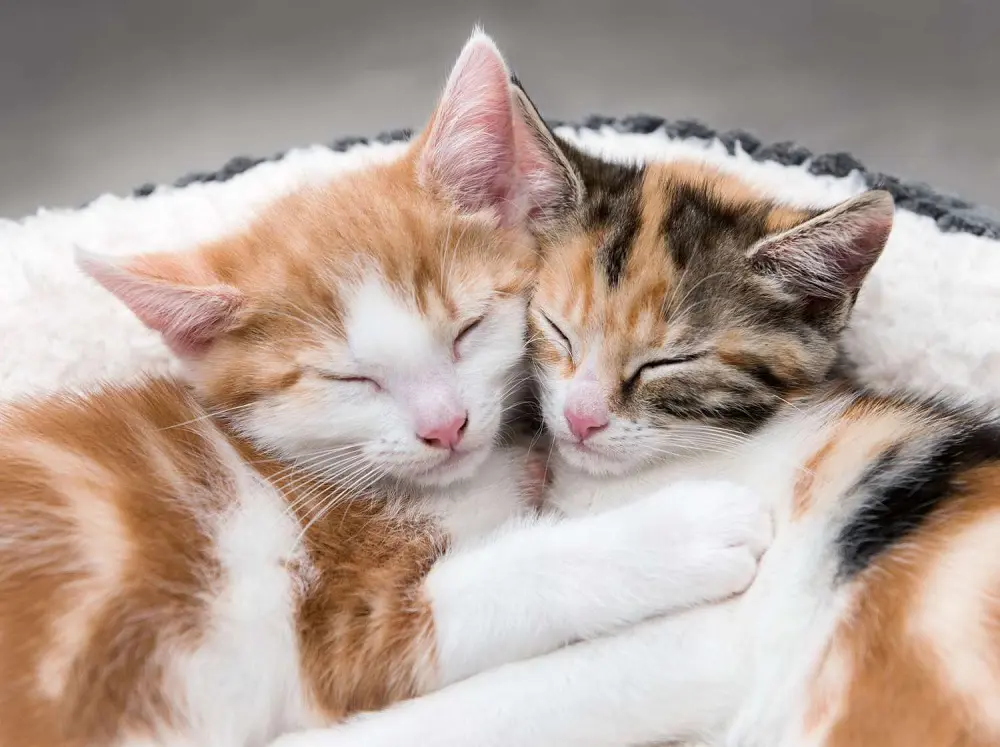20 Ultimate Cat Sleeping Positions And Their Meaning
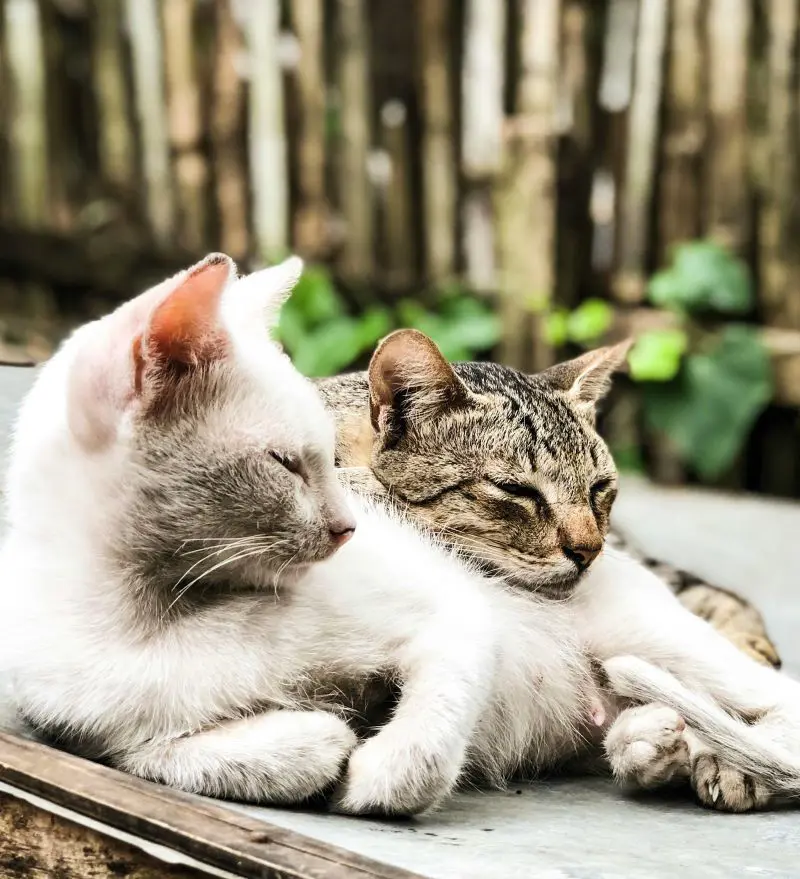
Cats are experts in relaxation, curling up in various adorable sleeping positions. But beyond the cuteness, these postures can reveal many things about your cat's mood, comfort level, and personality.
Beginning from the Classic loaf to the Superman pose, every position offers a window into their inner world. So, let's go deeper into this guide to analyze your cat's sleeping language with the fascinating secrets hidden in their snoozing positions.
1. The Classic Loaf
This sleep position is representative of comfort, contentment, and a visual sonnet for feline satisfaction. Imagine your cat resembling a perfect loaf of bread with no paws seen while sleeping.
This posture has them sitting upright with their front paws tucked neatly beneath their chest and their back legs tucked in or splayed slightly. They can still spring into action if needed, making a loaf a perfect balance between rest and readiness. It is a sleep position that resembles a cat and is comfortable but watch out for treats or anything interesting.
2. Curled Into A Ball
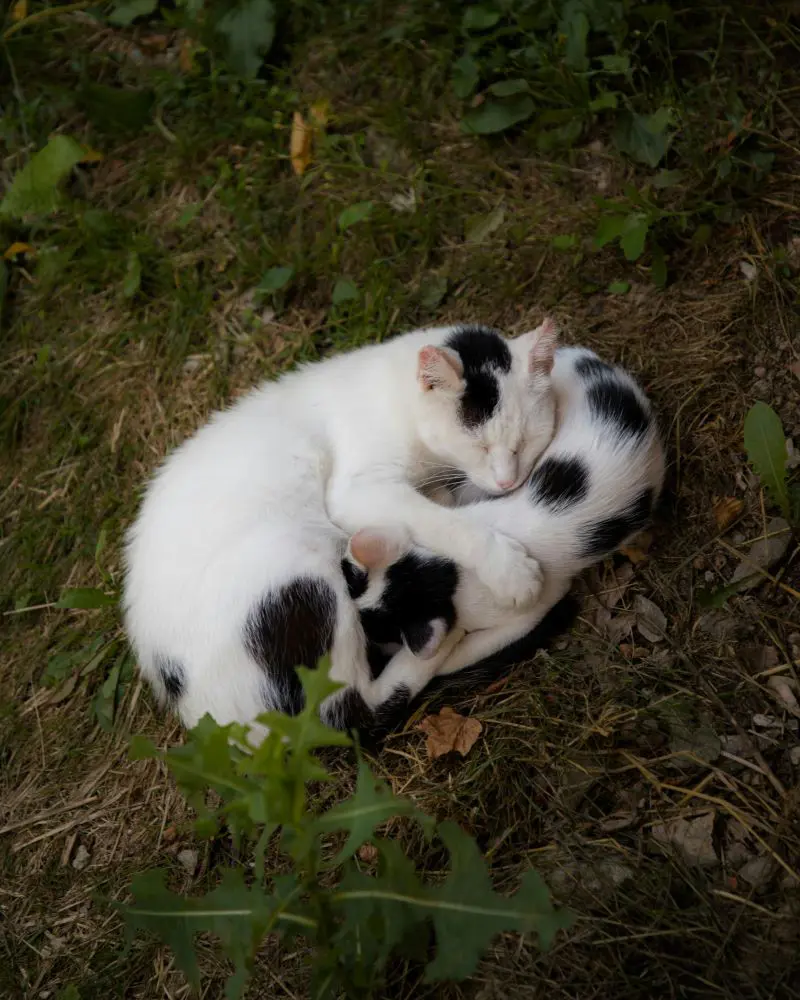
Cats often sleep curled up in a ball, with nose to tail. They like to be warm and this position helps retain their body heat. This position also protects vital organs in their abdomen by surrounding them with more resilient muscles and bones.
It also minimizes the body surface with a sense of security. Tucking their paws and tails close makes them less vulnerable to potential threats. This fetal position also provides a sense of security and coziness, similar to how a baby sleeps curled up in the womb. The curling position might be a comfortable way for your cat to relax.
3. On Their Back
You have seen your cat sleep on their back, with their front legs either resting on their belly or outstretched over their head and their belly fully exposed. If a cat is sleeping with their belly exposed, meaning they feel very safe and confident as they instinctively protect their vulnerable organs.
Even though your cat feels safe, you should probably not try to rub your feline friend's belly when they are in this position. Most cats attempt to defend themselves when touched in the belly area by biting, swatting, or scratching.
4. Side Sleeping

Your cat sleeps on its side, often with its legs stretched out. It is a relaxed position, which allows for a swift gateway showcasing their strategic napping skills. Similar to sleeping on their back, your cat's vital organs are exposed in this position.
Side sleeping makes it easier for your cat to jump or run if needed. As prey animals, having this escape option acts as insurance to help your feline friend get a restful sleep. Also, if you can see your cat napping like a furry starfish, it means they feel safe, secure, and completely comfortable in your presence.
5. The Superman Pose
Often referred to as splooting, the sleeping position reflects a cat eager for takeoff, lying on its belly. They favor this pose for several reasons, including cooling their bellies on cold tiles during scorching summer.
They can feel relaxed in this position, but all four paws are still extended and ready for action. They also carry the advantage of protecting their vulnerable belly. Lying on something warm like a fuzzy blanket can also help conserve body heat. However, during hot weather conditions, they may choose to lie on a tile or hardwood floor to cool down.
6. The Croissant
Picture a cat curled into a tight crescent shape as this position exudes warmth, offering comfort and protection during a severe catnap. This cozy curl offers a perfect blend of comfort and security.
This position allows your cat to tuck their paws underneath their body, keeping them warm. It also partially conceals their vulnerable belly and vital organs. This provides a sense of safety, especially for kittens or anxious cats, who might feel exposed while sleeping. Even though it might not indicate the deepest sleep, it allows them to stay alert somehow.
7. Perched On Furniture Or Appliances
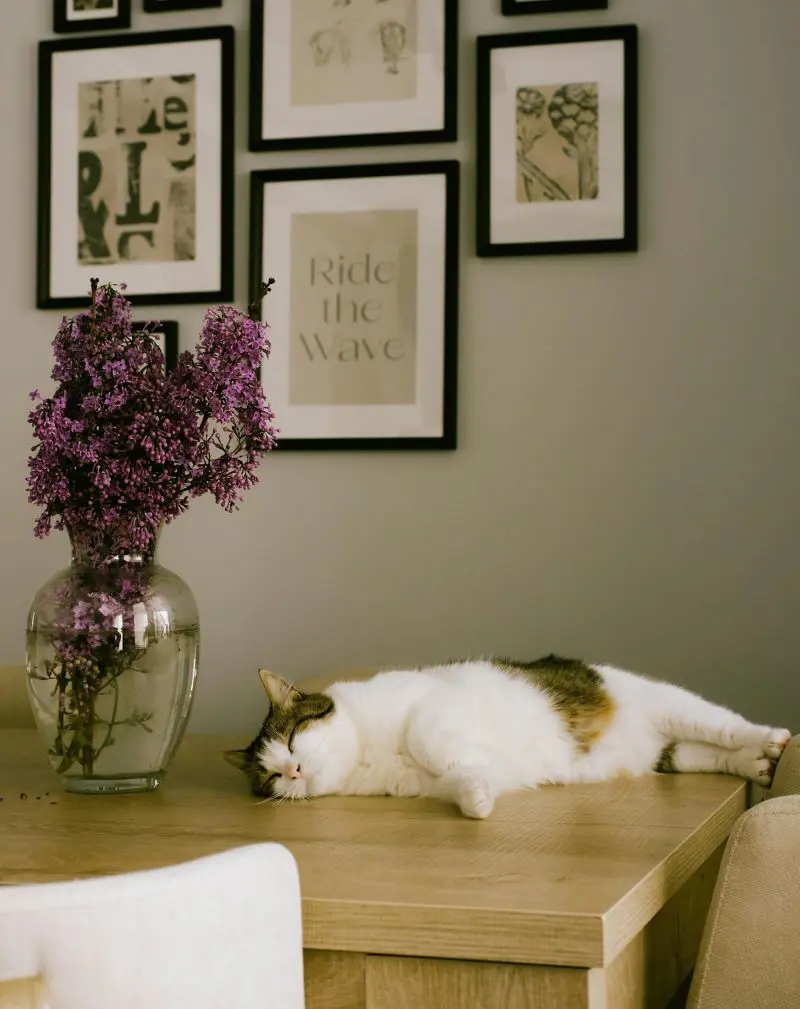
It may seem precarious when a cat sleeps perched on the back of the couch, the arm of the chair, or even on top of the refrigerator. But this position has its advantages.
For one, with a high vantage point, your feline friend will feel safe from potential predators while sleeping. A perched sleeping position like a predator gives your cat a panoramic view to keep an eye on potential prey. Consider your cat tree with a high perch as an alternative to your furniture, giving a designated place to snooze in high-point places. In-home prey can be their cat toys, but their motivation remains the same.
8. In Strange Positions
Cats are recognized for their peculiar sleeping behaviors and remarkable poses, leaving others astounded and inquisitive. While some positions recall comfort, sometimes others offer clues to their mood or physical state.
Unlike our other canine counterparts, they are extremely flexible with unique sleeping positions that seem awkward for us but are comfortable with the cats. Having an elastic disc in their spinal column allows them to twist their bodies into unusual shapes. The loosely attached muscles allow for a wide range of motion in the shoulder joint.
9. Sitting Upright

It seems cute when your feline friend sits up in a way that looks like they are trying to imitate a human due to confidence in their surroundings. Your cat can keep their head up and rotate their ears, staying somewhat alert to their surroundings.
A cat sleeping in a sitting position is exposing their belly, which means they feel safe. In addition, sitting up gives a cat easier access to groom their belly with less effort between naps. Also, sleeping in a sitting position may be done to support their back muscles.
10. On Your Chest
There are several reasons your cat might sleep on your chest. If your cat is bonded close to you, they may lie on your chest because they want to stay close to you. Your cat also wants to sleep on your chest to be closer to your mouth sometimes, as your voice may provide comfort.
Sleeping on your chest will give your cat a great source of body heat and the sound of your heart and the rhythmic motion of your breathing can soothe a cat while sleeping. If you tend to talk to them when they're in this position, they might have learned to associate it with positive interaction.
11. The Cuddle Bug
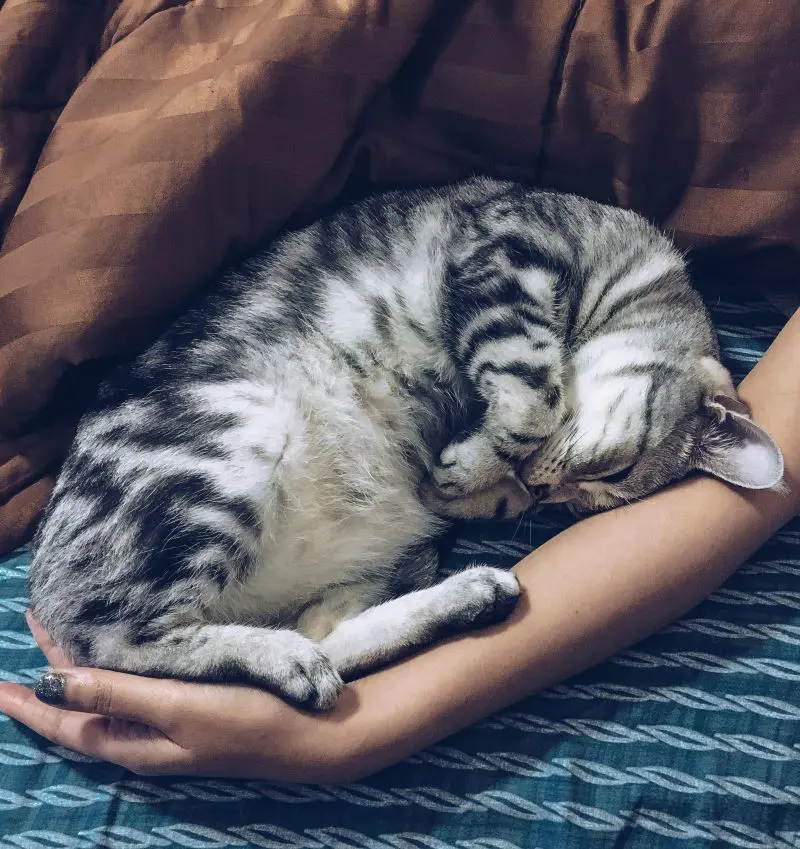
This sleeping position occurs when your cat curls up next to you or another pet showing a clear sign of trust and affection. It’s a warm gesture that also helps in staying cozy.
Lying next to you but not on you, means your cat trusts you enough to be in a vulnerable position while sleeping. Some cats are not comfortable sleeping on their human because they prefer the security of a small buffer zone. Also, this sleeping position is a way of saying they are bonded to you but need extra space.
12. The Sphinx
When a cat rests with its chest down and hind legs tucked underneath, it is called the Sphinx position. They sleep in this position to maximize heat retention as their exposed belly absorbs warmth from the ground, beneficial in cooler environments.
With their front legs tucked and heads raised, this position allows for a quick burst of movement, being in a semi-alert state and relevant for outdoor or stray cats. Also, this position allows them to stretch their front legs and relax their back muscles with tucked paws offering some protection.
13. The Stretch

In this sleeping position, your cat stretches out as far as it can, taking up as much space as possible. This is a sign of comfort and confidence, a testament to your cat feeling at ease.
Their back paws might be flexed with claws extended, and their head rests comfortably on the extended forepaw. This full-body sprawl signifies a feeling of ultimate security and relaxation. Also, this posture allows for a deep, unrestricted breath and a full-body melt into comfort. It is their visual representation saying that they are unwinding completely and the world is safe.
14. In A Box
As a prey animal, cats need a place to hide from their enemies. This need is why they seem to derive such pleasure from jumping into empty cardboard boxes. For kittens, a box offers a safe and cozy haven to explore and nap in, mimicking the snug security of their mother's fur.
Sleeping in a box gives a sense of security and warmth, sort of like camping tents do for humans with an easy exit when needed. When these cats try to fit into a box that seems too small, they seek security like an infant feels when they get swaddled.
15. The Lap Cat
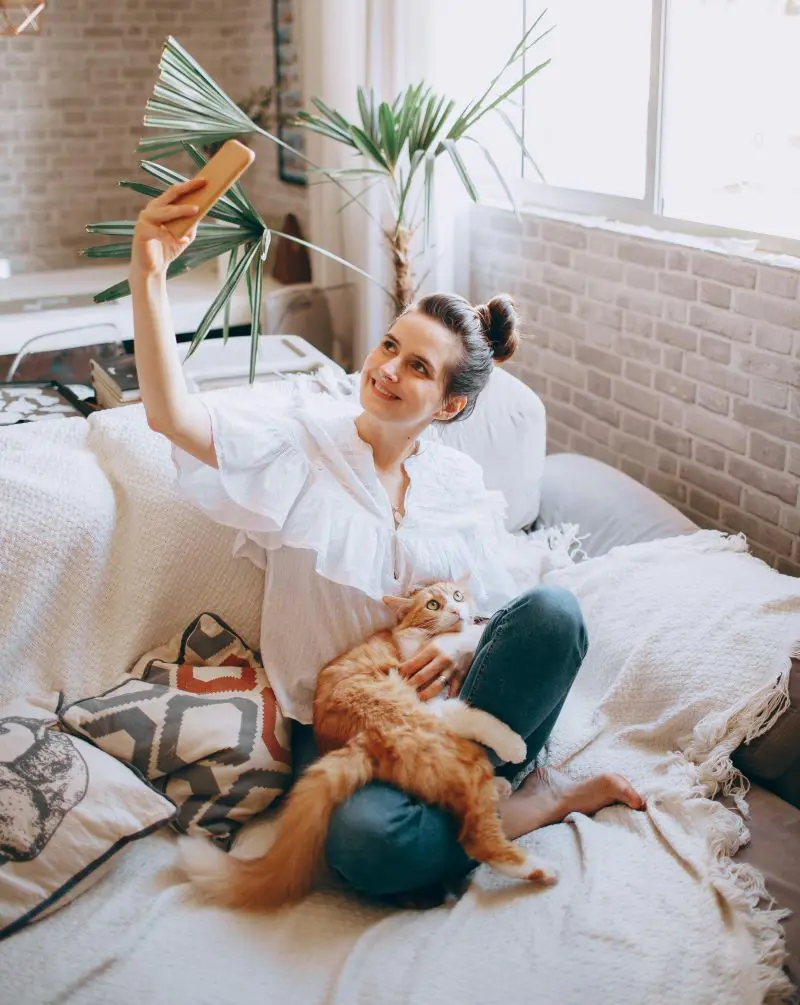
The "Lap Cat" is a beloved sleeping position for cats, resembling comfort, trust, and affection for their human companion. Curled up peacefully on the lap, cats want to say that, they feel saved and loved here, showing full truwwst and comfort.
This position allows them to conserve body heat while keeping close eyes on their human friend and is a prime time for a relaxing nap, accompanied by gentle purring and the creation of a special bond.
16. Paws Over Eyes
When your cat sleeps with their paws covering their eyes, there is good reason for this behavior. Putting their paws over their face can provide some insulation and warmth, for both paws and face.
A cat's paws can also act like a sleeping mask, blocking out harsh light or even dust or pollen. Covering their face with their paws helps to retain heat around their sensitive nose and eyes, especially during colder seasons. Also, if your cat is feeling overwhelmed, they might cover their eyes to block out stimuli and create a sense of security. In this deeper sleep phase, covering their eyes might be a way to minimize external distractions.
17. Tucked In
If your cat likes to sleep under the covers, they are probably enjoying the warmth and familiarity of your scent. They can sometimes be sensitive to noise, and the covers offer an escape from stressful noises. In addition, some cats like being securely wrapped in a blanket.
While cats covering themselves under covers or sheets is generally considered safe, you should be aware of where your feline friend is sleeping, and you don't accidentally sit on them. A relaxed cat enjoying a peaceful nap might tuck themselves in, allowing them to unwind and rest deeply.
18. The Sunbather
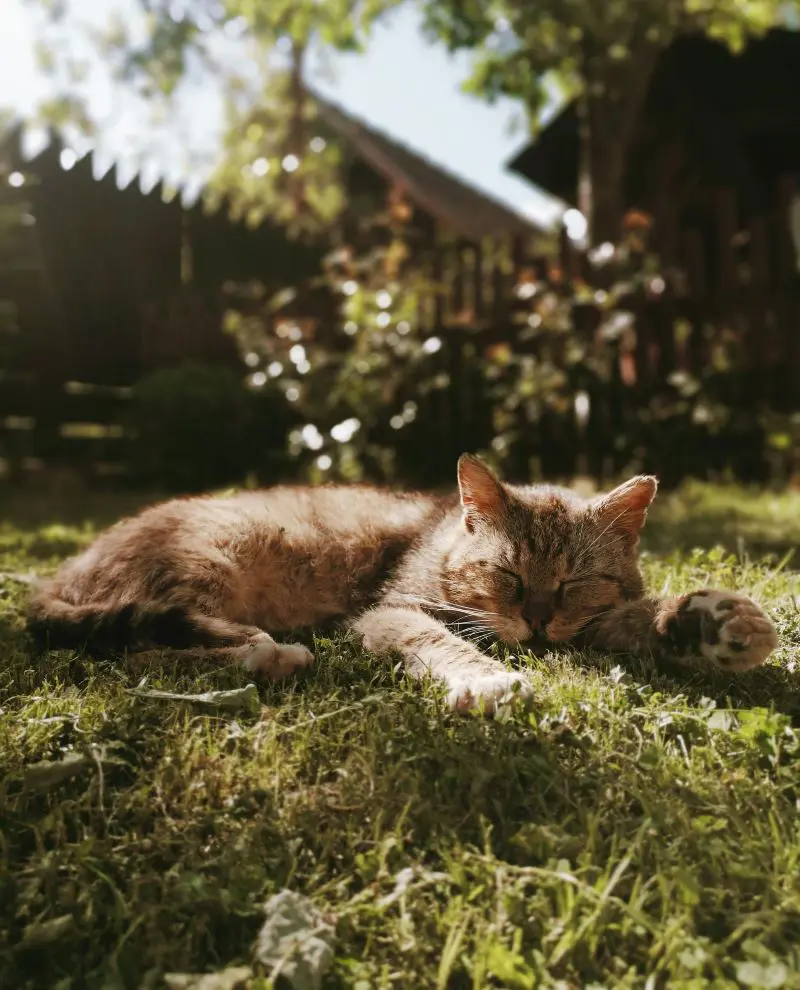
If your cat sleeps in a sunny spot, stretch out to soak up as much warmth as possible, embracing a sign of sunlight and a clear sign of contentment and comfort. Sunrays can help regulate their body temperature, especially beneficial for senior cats or those prone to feeling chilly.
The sunbather position allows for maximum exposure with their tummy facing upwards and limbs sprawled out, soaking up every ray. It's a vulnerable position, indicating they feel safe and secure in their environment.
19. With Other Cats
While some cats living in the same home merely tolerate each other, many more enjoy each other's company and will sleep together.
Sometimes this means sharing the same comfortable bed, but the cats may also sleep together because they are bonded to each other, and sleeping in a group provides heat. Your feline friend sleeping in a group may be soothed by the sound of another cat's purr. This closeness provides a sense of security and comfort, especially for kittens or anxious cats. It's also a way for them to share body heat, which can be beneficial in colder environments.
20. The Bird Watcher
Even in slumber, they're partially alert. This position allows them to quickly go into action if they spot a bird or something else testing their curiosity. It's a soft sleep that confirms they don't miss any potential prey.
Even with one eye closed, they can still hear and sense movement around them. The Bird Watcher position allows them to stay partially aware of their surroundings while taking some rest. Your cat sleeps with one eye open while watching birds or other animals outside, a sign of alertness, and fascination with the outside world.
Top Lists
